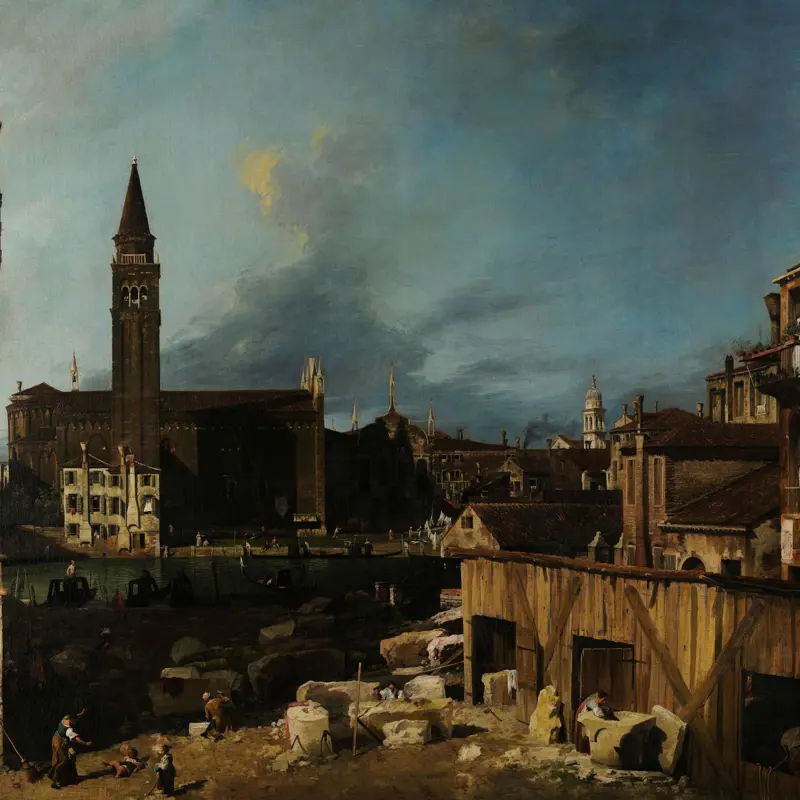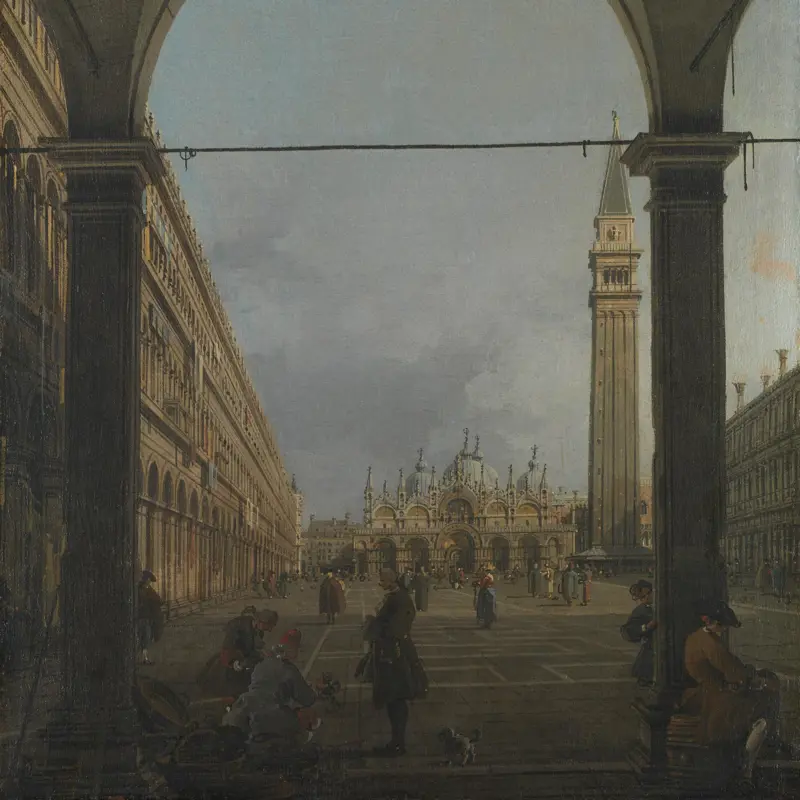View paintings, known as vedute, were very popular in 18th-century Venice. These scenes captured the city's most famous buildings, sparkling lagoon and busy canals. British travellers on the Grand Tour often bought them as souvenirs.
Canaletto was the most famous painter of Venetian views. His detailed pictures of feast days and festivals captured Venice's pomp and ceremony. He also painted quieter scenes of daily life in the city. From the 1760s, Francesco Guardi became the leading painter of Venice. His warm colours and looser brushwork now appear almost 'impressionistic'.
Not all Venetian paintings were of canals. Giovanni Battista Tiepolo and his son Giovanni Domenico Tiepolo specialised in dazzling decorative schemes. They painted both on canvas and directly onto fresh plaster (fresco). Their works are light and airy with bright colours and a sense of movement. Pietro Longhi led the market for smaller scenes of Venetian life. He painted carnival-goers, fortune tellers and even the famous rhino, Miss Clara.





















